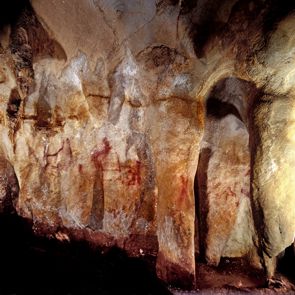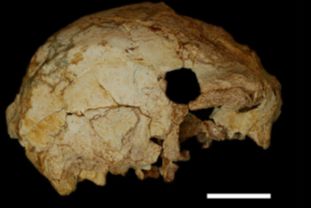U-series dating
One important part of my work is U-series (U-Th) dating. This requires precise and accurate U and Th isotope measurements and can be used for establishing timing of events and determining the rates of a wide variety of natural processes in earth and planetary sciences. The U-series disequilibrium method is based on the radioactive decay of radionuclides within the naturally occurring decay chains. There are three such decay chains, each starts with an actinide nuclide (238U, 235U, 232Th) having a long half live and ultimately ends with different a stable isotope of lead. U-Th dating can be applied to secondary calcium carbonate formations like speleothems , travertine or corals. For dating e.g. speleothems, we make use of an initial elemental fractionation between Th and U when carbonate bedrock is dissolved by percolating water. Differential solubility between uranium and its long lived daughter isotope 230Th means that drip water in caves and calcite precipitates from this water (e.g. stalagmites, stalagtites and flowstones) contain traces of uranium but essentially no 230Th. Over time, there is ingrowth of 230Th from the radioactive decay of uranium until radioactive equilibrium is reached where all isotopes in the series are decaying at the same rate. It is the degree of disequilibrium (measured as 230Th/238U activity ratio) that can be used together with the activity ratio of the two U isotopes 234U/238U to calculate the age of the calcite precipitation. Natural processes usually also cause an initial disequilibrium between 238U and 234U so the age since formation of a calcite sample is calculated iteratively from measurements of 234U/238U and 230Th/238U. The ratios between 238U and the daughter isotopes 234U and 230Th is measured using MC-ICPMS . This method has a dating range up to about 600,000 years.
MC-ICPMS
The analytical core of this laboratory is a ThermoFinnigan Neptune Multi collector (MC) inductively coupled plasma (ICP)
mass spectrometer (MS). Multi collector means that the mass spectrometer has an array of detectors, mainly Faraday cups,
to simultaneously measure ion beams of different isotopes. Ionisation of a sample is achieved by injecting the sample into
a so-called plasma, which is generated on an Ar gas stream within a so-called torch.
A Sample - usually in a weak acid solution - is nebulised into a spray chamber, where it is mixed with an Ar stream and then
injected into the plasma ('wet plasma condition'). We also have a Cetac Aridus II which removes the vapour from the Ar - sample
mixture before it is injected into the plasma ('dry plasma condition'). We furthermore have a Cetac Quick Wash system for the
Aridus II spray chamber and a Cetac ASX 112 autosampler system.
The Neptune 'plus' has an improved interface pump for increased transmission efficiency. A Neptune has typically an array of
nine Faraday cups. Eight Faraday cups are movable and the centre cup is fixed. The centre ion beam can be measured with the
centre Faraday cup or - for low ion intensity beams - deflected to a secondary electron multiplier (SEM) ion counting
detector which is located behind an energy filter (RPQ).
Additional miniature channeltron ion counters attached to Faraday cups allow static collection of low level ion beams, which is important for laser ablation analyses .
Details of MC-ICPMS are published in Hoffmann et al. (2007), Hoffmann (2008) or Hoffmann et al. (2009)
Clean laboratory
In my current laboratory at the Max Planck Institute for Evolutionary Antghropology we have a Pico Trace clean laboratory for sample preparation of MC-ICPMS applications. The laboratory is equipped with metal free clean lab furniture and ventilated with filtered air which generates an overpressure in the room to keep out airborne particles. We have two types of work stations: horizontal laminar flow fume hoods and laminar flow high security workstations RLK with vertical air flow. Our clean room meets ISO 14644 class 3 or better, in the work stations we typically meet ISO 14644 class 2. We have a separated balance room with a Mettler Toledo high precision balance. The balance room is connected to the clean room via a transfer port. The clean laboratory is further equipped with acid inert safety hotplates, a closed subboiling distilling system and a MilliQ water supply.

